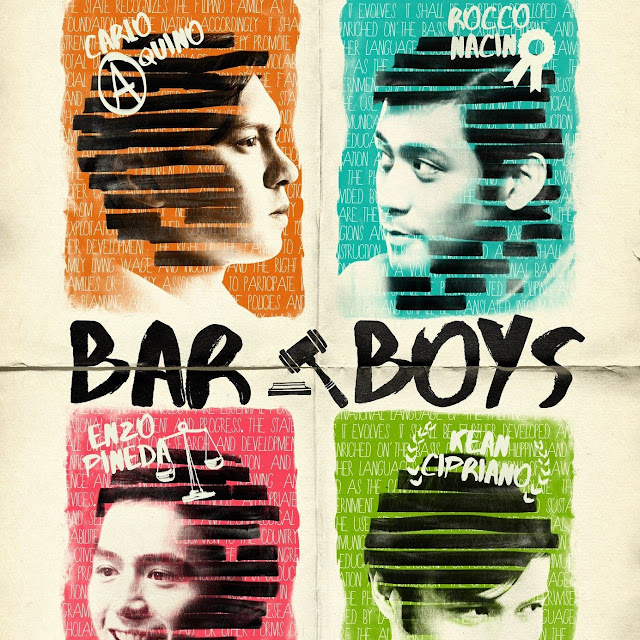“Indie Film” as a Genre
What
truly sets the Independent Cinema apart from the Mainstream Cinema? In recent
times, in the context of Philippine Cinema, independent films, also known as “indie
films”, have been establishing their identity that distinguishes it from the
domination of the mainstream movies or the commercial/popular cinema. However,
indie films, due to their proliferation and feats, seemed to have formed their
own style or genre. This paper aims to explore the denotation and connotation
of the indie film as a form of cinema and consequently as a film genre. This is to
further demonstrate the supposed definitions of indie film, which may
constitute a new treatment in understanding the national cinema.
 |
| Image by ErikaWittlieb from Pixabay |
What is indie? As Carrie Szabo, a film and screen practitioner, characterized in her study Independent, Mainstream and In Between: How and Why Indie Films Have Become Their Own Genre, it is the abbreviation of the term independent which is defined with regard to the film’s financial situation, conformity or deviation from its counterpart – the mainstream, production, and distribution. However, this has not been the case when an indie film is financially produced and distributed by a studio company or its conglomerate companies which gives us the difficulty to determine whether an independent film retains its “independence” when it is made inside a studio. Thus the term indie film seems to require a new definition to fully understand how we can further classify it. By making it its own genre, films that are labeled “indie” make an impression about its characteristics – mechanical and narrative form and style. There are certain traits that audiences attribute to an indie film when it is labeled as one, and what they anticipate on an indie film helps to better classify independent films today (5).
Since
the financial distinctions between independent film and mainstream film are
becoming blurry, does redefining what makes independent films independent help to
better distinguish it from its counterpart? Making “indie film” as its own
genre makes it distinct from the mainstream films. But it does not mean that
all independent films are alike and fall into one cluster; just like any genre
or form, it has subcategories which differ “from
themes, stories and even overall styles,” (Szabo 25) let alone the varied
financial cost of such movies. Moreover,
in the Philippine context, the so-called Filipino indie movies have commonly
used poverty-driven themes and realism film style which reflect the different
faces of society in the country. Filipino independent films are perceived to
mirror social realities, societal struggles, and topics that mainstream do not
usually draw on (Fuentes, Labilles, and Reyes 145-148). What sets the
independent cinema apart from the mainstream cinema is not the financial
condition anymore. As what Szabo claims “…independent
films are less defined by their finances and rather can be classified by their
own emerging genre -“the indie” (6).
What is the Filipino “indie” genre then? Firstly, it is
opposed to the formula that Filipino mainstream cinema has been using – the
classical Hollywood style, which immerses the audience to the narrative by using
filmmaking techniques such as continuity editing and conventional storytelling
(Szabo 31-41), in order to gain profits. Whereas independent cinema does not
conform to the conventional storytelling and profit-driven crafts, indie
filmmakers exercise their artistic freedom through unique mechanical and the narrative style of filmmaking. For instance, in Defining the Aesthetics of Philippine Independent Cinema: An Interview
with Brillante Mendoza conducted and published by Elvin Amerigo De Guzman
Valerio, a literature graduate student, the internationally acclaimed Filipino
filmmaker shared his filmmaking procedures which revealed the uniqueness of
independent cinema from the mainstream. Mendoza believes that scripts should be
flexible; he even encourages improvisation from his actors, and that “it [is] difficult to adjust to working in
the mainstream because everyone’s so concerned with the script” (17). Additionally,
we can infer from the interview that independent filmmakers like Mendoza become
the author of their movies where they can practice their creativity and showcase
auteurism, unlike in the mainstream
where the artistic freedom of such filmmakers are limited by the restrictions
of commercial conventions: “still [trying]
to imitate Hollywood ‘look’,” as Mendoza puts it (5). “This is not a mainstream film where we do histrionics and have
close-ups just for the sake of having a close-up.”(23) proves the
conception that indie films, with regard to its technical and mechanical
aspects, are with depth and meaning which serve as stimuli for creative and critical
interpretations. Can mainstream cinema dare to adapt such form? It actually can
but it risks contradicting its very own character which is mainly to appeal to
the mass audience.
Going
back to “indie films” as a genre, I can relate the theory of Szabo where she
primarily considers what the audience anticipates towards indie films for it be
considered as its own genre with the study conducted by Fuentes, Labilles, and
Reyes. The latter examined the perception of indie films of selected Intramuros
based audiences and found that the audiences have these two primary connotations: indie films as films about
society and indie films as
director’s self-expression or “auteurism”.
These findings play a vital role in the nature of independent film as its own
genre. Giving filmmakers the freedom to author their own craft truly makes a
distinction between the independent cinema and the mainstream because the
former evidently allows such. Auteurism, in cinema and media context, makes the
director “the supreme reigning artist of
their work” (Griffin) .
But to consider who can be called auteur demands another discussion for it has
a controversial history whether a director or an artist involved is
automatically the auteur himself especially if it is collaborative work.
So
will it suffice to say that this defines the Filipino indie genre in the
national cinema? Meaning to say, “Indie film” as a film genre that exhibits
social reality and director’s auteurism. It has creative freedom, which
refers to the jurisdiction over the filmmaking processes, to conceptually and
visually create and produce a motion picture that depicts the narrative and the message of what the independent filmmakers are trying to tell without the
restrictions of the commercialized companies. The film industry that is majorly
classified into two: the independent and the mainstream, such that of the
Philippine cinema is subject to change, to progress, and even to confuse one
with the other.
Making
indie films as its own genre – which means to say having a style of film
realism and the director’s creative expression – further establishes the identity
of the independent cinema in the national cinema. However, in order to fully institute such
distinctiveness, Alex Tioseco, a film critic, poses a new challenge to the
independent cinema in the Philippines. As he states, “The challenge that it now faces is to get the attention of the
exhibitors so as to bring its works to the audience at large. It is when this
is accomplished, and only when this is accomplished, that we will see the true
effects of this new cinema.” So what if the independent cinema affords to
establish its new identity as a film genre but is not fully recognized by the
masses? Being put to question, the true
place of indie films in the national cinema is yet to be realized.
Works
Cited
Fuentes, Gil Gerald N., Dwight
Roussel Glenn M. Labilles, and Rowena Capulong Reyes. "The Perception on
Indie Films of Selected Intramuros Based Audiences." International
Journal of Social Science and Humanity 5.1 (2015).
Griffin,
Jacqui. A Quick Guide To Auteur Theory. 28 February 2017. Web. 29
September 2018.
<https://www.filminquiry.com/quick-guide-auteur-theory/>.
Szabo,
Carrie. "Independent, Mainstream and In Between: How and Why Indie Films
Have Become Their Own Genre." Honors College Theses 96 (2010).
<https://digitalcommons.pace.edu/honorscollege_theses/96>.
Tioseco,
Alexis. "Shifting agendas: the decay of the mainstream and rise of the
independents in the context of Philippine cinema." Inter-Asia Cultural
Studies 8.2 (2007): 302.
Valerio,
Elvin Amerigo De Guzman. "Defining the Aesthetics of Philippine
Independent Cinema: An Interview with Brillante Mendoza." Journal of
Asian Cinema (2011).
Paper 1 - Conceptual
ENG 13 (Writing as Thinking)
4 October 2018







Comments
Post a Comment